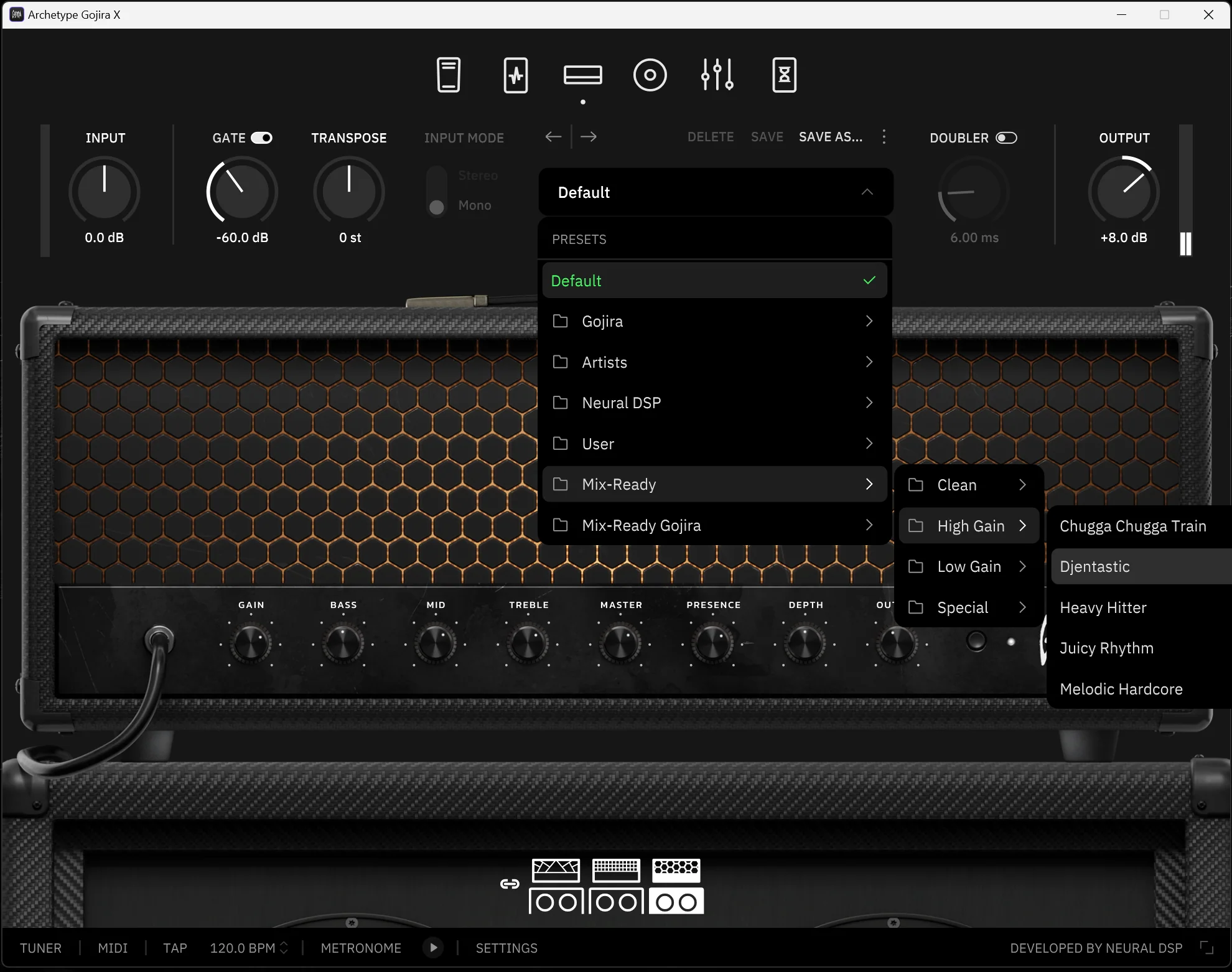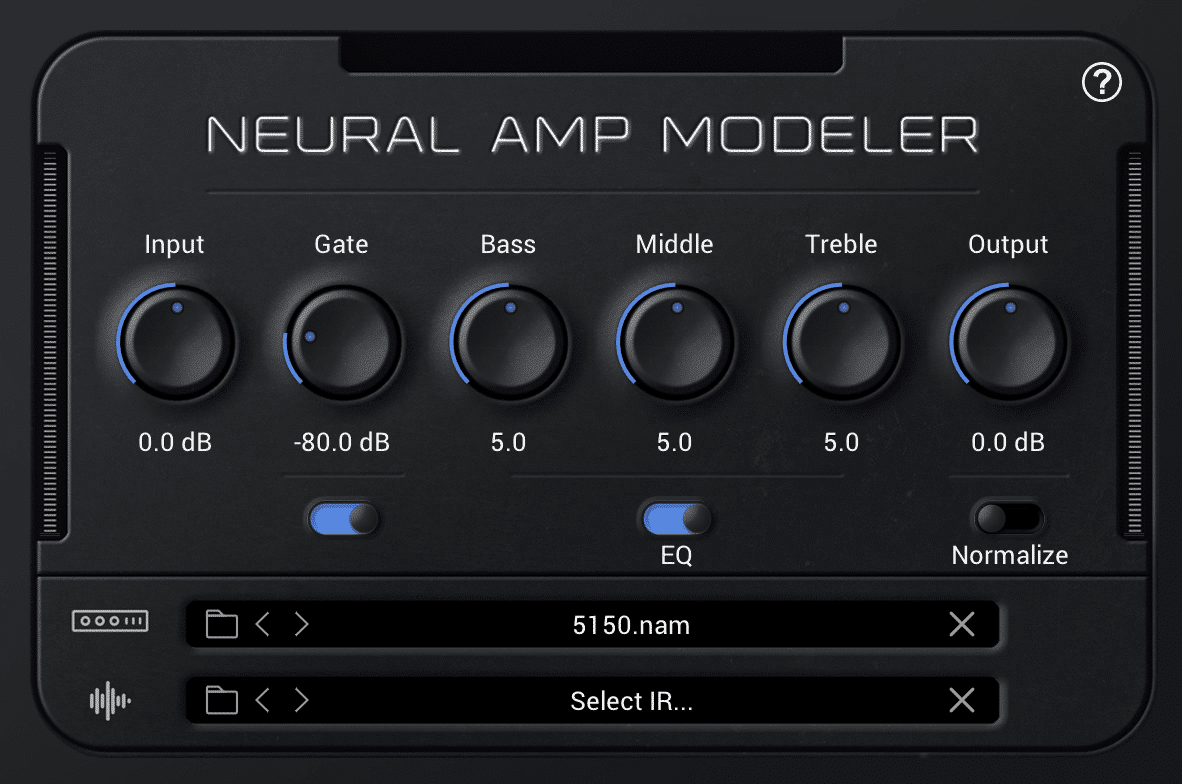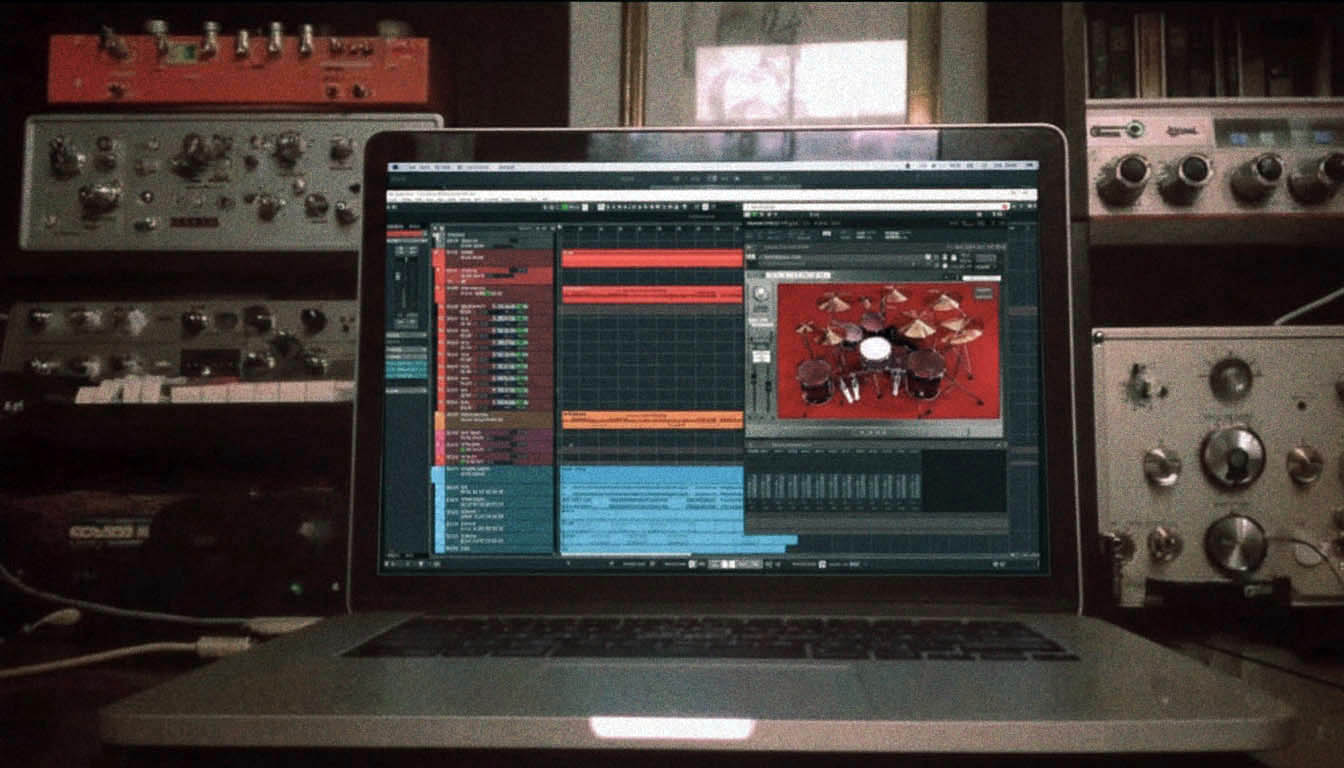
Compression For Metal Producers: The Ultimate Guide
Nail The Mix Staff
Let’s be real: in modern metal, “loud” is often the first word that comes to mind. And yeah, we want our mixes to hit like a sledgehammer. But if you’re only thinking about compression as a way to crank the volume, you’re missing out on its true power. Many beginners fall into the trap of just squashing everything, hoping for loudness, but ending up with a mix that’s flat, lifeless, and frankly, a bit of an “overcooked” mess.
The truth is, compression is one of the most versatile and creative tools in your metal mixing arsenal. It’s not just about taming peaks; it’s about shaping tone, injecting serious punch, controlling wild dynamics, creating undeniable glue, and even adding unique, aggressive character. This article is your guide to unlocking those secrets, moving beyond the “make it louder” mentality, and using compression to elevate your metal tracks from merely heavy to truly monstrous. We’ll cover the core concepts in a metal-specific context, dive into strategies for individual instruments, explore the magic of bus compression, and even touch on some “rule-breaking” creative approaches.
Back to Basics: Compression 101 (The Metal Edition)
Before we get into the nitty-gritty, let’s quickly revisit what those knobs on your favorite compressor plugin actually do in the context of a face-melting metal mix.
It’s Not Just a “Volume Knob”: Understanding the Key Controls
Threshold:
This isn’t just about when the compressor kicks in; it’s about how it interacts with the raw, aggressive dynamics of your source. For a blistering guitar track or a pummeling snare, the threshold determines how much of that initial transient energy you want to let through before the taming begins.
Ratio:
How much sonic beatdown are we applying? Lower ratios (like 2:1 or 3:1) can provide gentle glue and subtle control, while higher ratios (4:1, 8:1, or even higher) lead to more aggressive shaping, leveling, or even outright limiting – sometimes exactly what a chaotic metal performance needs. The ratio dramatically impacts the perceived aggression and consistency.
Attack:
This is critical for punch in metal. A slightly slower attack lets the initial “crack” of a snare or the “thwack” of a kick drum punch through the mix before the compressor clamps down. A faster attack can tame spiky pick attacks on guitars or smooth out an overly dynamic vocal, but set it too fast on drums, and you might lose all that vital impact. Making quick, decisive moves based on understanding what you want to achieve is key, and attack/release settings are fundamental to that initial sound.
Release:
This dictates how quickly the compressor stops working after the signal drops below the threshold. In rhythmically intense metal, finding the right release is crucial. Too fast, and you can get unnatural “pumping” or distortion. Too slow, and you’ll suck the life and dynamics out of the track, making everything sound choked. You need it to “breathe” with the music.
Makeup Gain:
Obvious, right? It replaces the level lost during compression. But it’s also an opportunity. You can use it to drive the signal into the sweet spot of another plugin in your chain (like a saturator or tape emulation) or to simply create a more powerful perceived loudness after you’ve controlled the dynamics.
Why These Settings Aren’t Universal:
It bears repeating: there are NO magic numbers or “one-size-fits-all” compressor settings. What works wonders on one kick drum might destroy another. The optimal settings are entirely dependent on the source material (is it a cleanly recorded DI or a roaring amp?), the specific compressor plugin or hardware unit you’re using (an 1176 behaves very differently from an LA-2A!), and, most importantly, the desired effect you’re trying to achieve within the context of the song. Focus on the “why” and the end result you’re hearing, not just copying settings you saw online.
Forging Brutal Drums: Compression for Impact & Clarity
In modern metal, drums are the backbone, the driving force. Compression is your key to making them hit hard, cut through the densest mixes, and maintain clarity even when the BPMs are screaming.
Kicks That Obliterate (But Still Breathe):
That modern metal kick needs to be a consistent, gut-punching force that doesn’t get lost under layers of low-tuned guitars. Compression helps achieve this by evening out the drummer’s performance and shaping the kick’s envelope. You’ll often want to balance a fast enough attack to control the initial click and beater impact with enough release to let the body and sustain resonate. Classic choices often involve 1176-style FET compressors for their aggressive attack, sometimes blended with other techniques for enhancing the low-end body.
Snares That Crack Like Thunder:
The snare is the warlord of the metal kit. It needs to command attention and slice through the chaos, especially during relentless blast beats or intricate, fast fills. Compression can:
- Enhance the initial “crack” or transient.
- Control excessive ring or unwanted overtones.
- Bring up the body and sustain of the drum.
- Even out dynamic inconsistencies in the performance. Consider parallel compression (sending your snare to an aux track, crushing it with compression, and blending it back in) to add massive body and aggression without sacrificing the transient detail of the main snare track.
Toms: Punchy and Defined, Not Muddy:
Toms can easily become a muddy mess in a metal mix, especially if they have a lot of sustain or are tuned low. Compression can help tame that unruly sustain, bring out their attack, and make them punch through clearly without cluttering up the crucial low-mid frequencies.
Overheads & Rooms: Control vs. Chaos:
Overhead and room mics capture the overall energy and ambiance of the kit. While you want that energy, excessive or uncontrolled room sound can quickly turn fast metal passages into an undefined wash of cymbals and noise. Careful compression can bring out the detail in the cymbals and the natural space of the kit, but be wary of over-compressing, especially with fast music, as it can make everything sound small and chaotic. The goal is controlled power, not just a wall of noise.
Guitars & Bass: Glue, Girth, and Unholy Grind
Guitars and bass are the sonic bedrock of most metal. Compression plays a vital, if sometimes debated, role in shaping these elements into a cohesive and powerful force.
The Great Guitar Compression Debate:
You’ve probably heard it: “You don’t need to compress heavily distorted guitars; they’re already compressed!” While there’s truth to amp distortion naturally compressing a signal, targeted compression can still offer significant benefits. For those ultra-low-tuned, high-gain rhythm tones, subtle compression can:
- Tame fizzy or harsh high-end artifacts.
- Even out the dynamics between palm-mutes and open chugs, making the rhythm feel more locked-in and powerful.
- Add sustain and evenness to lead guitar lines, helping them sing over the top.
- Help a DI signal feel more “played” and controlled before it hits an amp sim. Even the choice of a thinner guitar pick can act as a form of natural compression by providing a more even DI signal due to the pick flexing more on harder strums. This same goal of dynamic consistency can be achieved or further enhanced with plugin compression.
Crafting a Bass Tone That Rumbles and Sits:
A solid, consistent bass tone is absolutely essential for the low-end foundation of a modern metal track. Compression helps by:
- Evening out the volume differences between notes played on different strings or with varying intensity.
- Adding sustain to ensure the low-end doesn’t disappear between notes.
- Helping the bass “sit” correctly with the kick drum and the often-dense rhythm guitars, providing that crucial link between rhythm and harmony. Techniques like multi-band compression are invaluable here, allowing you to control specific boomy or unruly low-end frequencies without killing the overall power and weight of the bass. And don’t forget the classic trick of sidechaining the bass to the kick drum – it still works wonders for carving out space and ensuring both elements punch through clearly in the low-frequency spectrum.
Vocal Warfare: Compression From a Whisper to a Brutal Roar
Modern metal vocals are an exercise in extremes – from hauntingly clean sung passages to guttural lows, searing screams, and layered harmonies. Compression is non-negotiable for taming this insane dynamic range and ensuring the vocals command attention.
Taming the Beast: The Insane Dynamic Range of Metal Vocals:
The journey from a delicate clean vocal to an all-out enraged scream can be a 20dB+ jump. A single compressor will often struggle to handle this gracefully. This is why many metal mixers employ multiple stages of compression.
Series Compression for Smooth Control:
Instead of one compressor doing all the heavy lifting (and often sounding overworked and obvious), try using two or even three compressors in series, each doing a little bit each. For example:
- A fast-attacking FET-style compressor (like an 1176 emulation) to transparently catch and control the loudest peaks.
- Followed by a smoother, slower optical compressor (like an LA-2A emulation) to provide overall leveling and add character. This approach often results in much more natural and controlled-sounding vocals.
Parallel Compression for Aggression & Presence:
Want to add serious power, density, and sustain to your metal vocals without making the lead vocal sound completely squashed and lifeless? Send your lead vocal to an auxiliary track, absolutely crush it with an aggressive compressor (think high ratio, fast attack), maybe even add some saturation or EQ, and then blend that heavily processed track back in underneath the main vocal. This can bring up low-level details, add incredible energy, and help the vocal stay present in the busiest parts of the mix.
Ensuring Intelligibility:
Ultimately, you want the listener to understand the lyrics (most of the time!). Effective compression, working hand-in-hand with careful EQ, helps keep the vocals front and center, cutting through the wall of distorted guitars and cymbal crashes without having to be excessively loud.
Bus Compression: The Secret Sauce for a Cohesive Assault
Once your individual tracks are sounding great, bus compression is the next step to making everything feel like it belongs together, adding that final layer of punch, energy, and professional polish.
Drum Bus Compression: Making the Kit One Cohesive Weapon:
Sending all your drum tracks (kick, snare, toms, overheads, rooms) to a stereo bus and applying compression there can work wonders. It can:
- “Glue” the individual drum elements together, making them sound like a single, powerful instrument.
- Add overall punch and excitement to the drum performance.
- Help control the overall dynamics of the kit. Different compressor types will yield different vibes here. An SSL-style VCA bus compressor is a classic for adding punch and cohesion, while a Vari-Mu style compressor might be used for a fatter, rounder, and more “vintage” glue.

100+ Insanely Detailed Mixing Tutorials
We leave absolutely nothing out, showing you every single step
Mix Bus (Master Bus) Compression: The Final Polish (or Disaster):
This is often seen as the “black art” of mixing, but subtle mix bus compression can be the difference between a collection of good-sounding tracks and a truly cohesive, energetic, and commercially competitive song. When applied judiciously, it can:
- Add a final layer of “glue,” making all the instruments feel like they’re playing together in the same space.
- Increase perceived loudness and excitement without aggressive limiting.
- Help to subtly control the overall dynamics of the track, making it feel more solid and impactful. However, this is a stage where it’s incredibly easy to do more harm than good. Over-compressing your mix bus is a fast track to a flat, lifeless, pumping, and dynamically ruined master. Typical starting points involve low ratios (1.5:1 to 2.5:1), relatively slow attack times (to let transients breathe), and fast or auto-release settings, aiming for just a few dB of gain reduction. Crucially, many pros advocate for mixing into the bus compressor from a relatively early stage in the process, rather than just slapping it on at the very end. This allows you to make mix decisions (levels, EQ, individual track compression) that react to how the bus compressor is behaving, leading to a more integrated and musical result. Some producers have their master bus processing, which might include compression and saturation, active as they build the mix, shaping the sound with that final stage in mind.
Beyond the “Rules”: Creative & Extreme Compression in Metal
While understanding the fundamentals is vital, metal is a genre that often thrives on pushing boundaries and breaking conventions. Don’t be afraid to use compression in unconventional ways to achieve unique and aggressive sounds.
Trusting Your Ears, Not Just the Textbook:
Metal production is often about raw energy and visceral impact. If a “wrong” compression setting sounds absolutely brutal and perfectly serves the song’s aggression, then it is right for that track. Remember, many of the “rules” are just starting points. A “no rule book” philosophy, which involves extensively manipulating audio, often leads to the most distinctive sounds. Conventional wisdom about things like “triggers are cheating” or “too much compression is bad” often gets thrown out the window when the goal is an extreme sonic statement.
Using Compressors as Sound Design Tools:
- Extreme settings for radical tonal shaping (e.g., making a snare sound like a gunshot).
- “Pumping” and “breathing” effects timed to the music for rhythmic interest.
- Using the saturation/distortion inherent in some compressor plugins as a feature.
Experimentation is Key:
Don’t be afraid to try unconventional signal chains or settings. You might discover your next signature sound. The importance of understanding why you’re doing something frees you to experiment beyond just copying settings.
Conclusion: Compression as Your Creative Ally
In the world of modern metal, compression is a multifaceted tool. It’s about control, punch, tone, and character – far more than just making things louder. Moving beyond just trying to make things louder and starting to understand how each parameter interacts with your audio is the key to unlocking its full potential.
Mastering these compression techniques takes practice and, ideally, guidance from those who’ve battle-tested them on countless metal anthems. This is where Nail The Mix shines. You’re not just getting presets; you’re seeing why world-class producers make specific compression choices on real songs by bands you know and love.
Watching them dial in compressors by ear, explaining their thought process for choosing a particular unit for a specific task, and how they balance aggression with clarity – that’s invaluable for developing your own feel and instincts with compression. It’s about learning the art, not just the settings.
Ready to truly harness the power of compression in your metal mixes? Check out the sessions on NailTheMix.com.
Now, take one instrument in your next mix – be it a kick drum, a rhythm guitar, or a lead vocal – and consciously experiment with different compression approaches based on the concepts discussed. Your unique sound is waiting.
Get a new set of multi-tracks every month from a world-class artist, a livestream with the producer who mixed it, 100+ tutorials, our exclusive plugins and more
Get Started for $1







